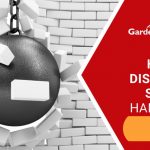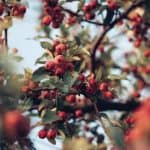Jump to:
If you love connecting with nature and spending leisure time outdoors, gardening can be rewarding. But when you’re new to this pleasant hobby, it can be overwhelming to know how to get started.
But fret not! Even gardening experts have gone through this swamp stage at their outset. Your starting point is to get yourself familiar with garden tools.
Depending on how elaborate your backyard is, you’ll need a variety of tools to get the job done. The key here is to focus on the must-have garden tools.
Key takeaways:
- When it comes to the list of garden tools, there’s a wide range of them to add to your collection. You need to determine the best ones worthy of your investment.
- To make your research easy, we’ve rounded up the essential garden tools and their uses – ideal for novices.
Essential Garden Tools and Their Uses
1. Gardening gloves
Good gardener gloves are such an underrated “tool” – they may not even be on your list. But sure enough, they’re essential and a favourite of garden pros.
Not only do they keep your fingernails and hands clean and dry, but they also protect your hands from:
- Existing cuts and scrapes getting infected
- Blisters and calluses
- Thorns
Suppose you’re dealing with thorny branches or plants. A pair of gardening gloves can guard your hands and even your wrists (depending on style) against the risks.
Overall, wearing gardening gloves is a common-sense approach. Not only as hand protection from dirt but also from deadly diseases lurking beneath.
Note: Diseases like Legionnaires can be caught from stagnant water. Weil’s disease and salmonella, meanwhile, can even be transmitted through compost heaps!
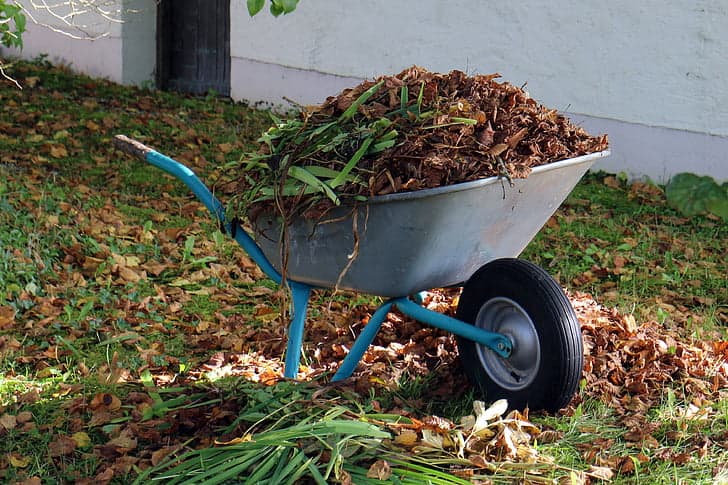
2. Wheelbarrow
A wheelbarrow is ideal if you have a large backyard to cultivate, assisting you in a lot of tasks. You can use it to move dirt, compost and even stacks of leaves smoothly across your property.
Whether it’s made of galvanised steel, fabric, or hard plastic, it’s a great tool for transporting new seedlings to flower beds. What’s more, a model with a strong handle can carry out a variety of gardening tasks like:
- Moving rocks, mulch or compost piles around the garden
- Carting trees or large shrubs from one spot to another
- Hauling bricks
- Disposing of garden debris
- Mixing concrete or fertilisers

3. Hand trowels
A garden trowel is used for digging small holes and weeds. Many gardeners find this hand tool immensely useful.
In fact, trowels are quite common in gardening sheds as a result. You can dig holes, plant flowers, remove weeds, and do anything you would expect with a tiny shovel.
Their blades have a forked end which allows them to dig to the base of a weed and pull it out by its roots. It’ll also be more accessible if you transport plants from your veggie garden using one.
Trowels are also great for transferring dirt into plots and planting seedlings. And you can get your own FREE with our garden kneeler set.
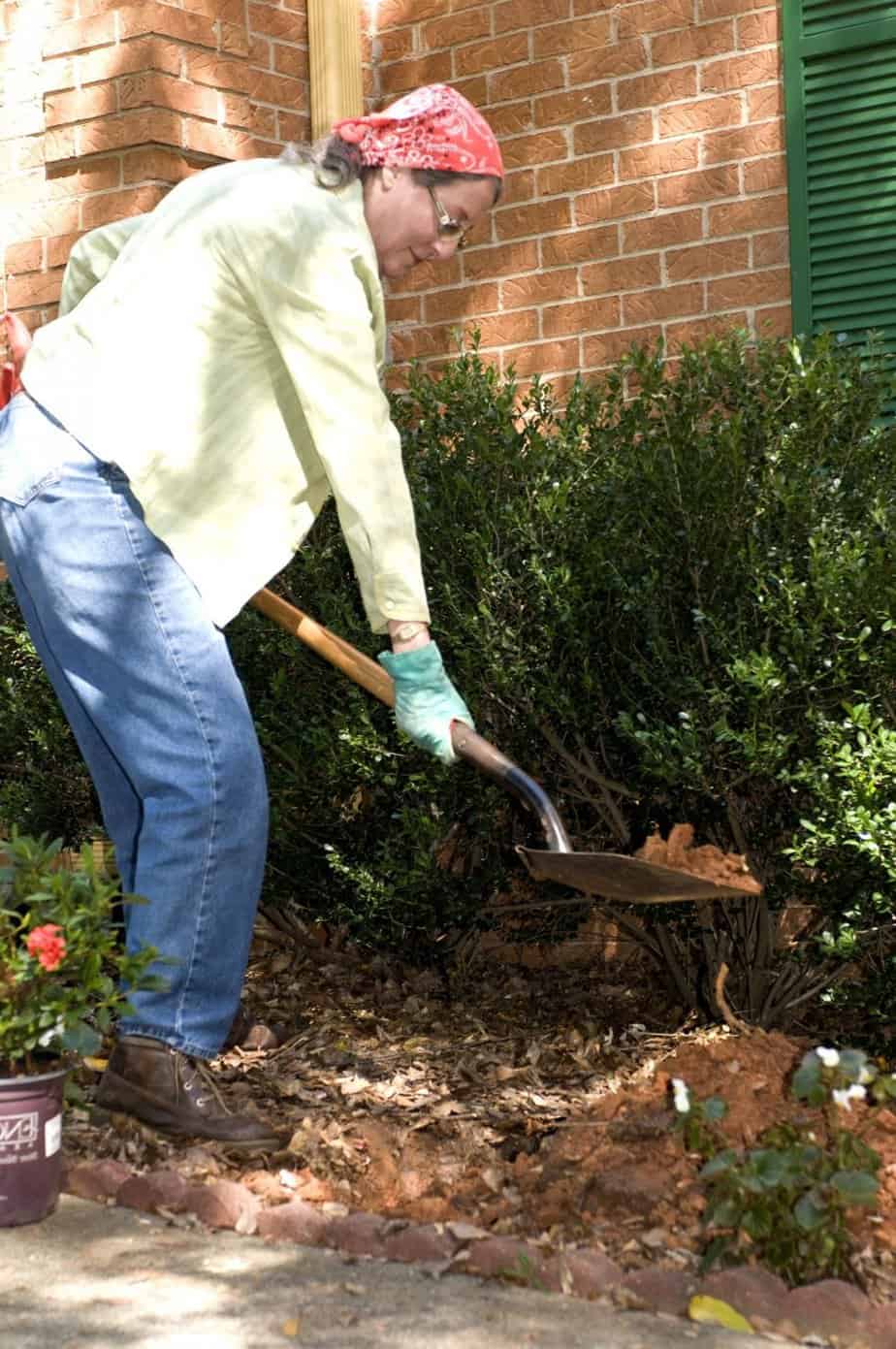
4. Digging shovel
You’ll find how useful a digging shovel can be if you’re gardening in your yard or a raised bed. It features a rounded blade and a slightly pointed tip.
It makes lifting, digging and sifting soil, coal, snow, sand and gravel a lot easier. Indeed, it’s a multi-purpose tool, serving various jobs at once.
This garden equipment also makes a great companion with a wheelbarrow. For instance, when transferring dirt, you don’t have to dump the whole load.
Not only that, but a digging shovel is perfect for stirring or mixing compost piles as well as potting soil.
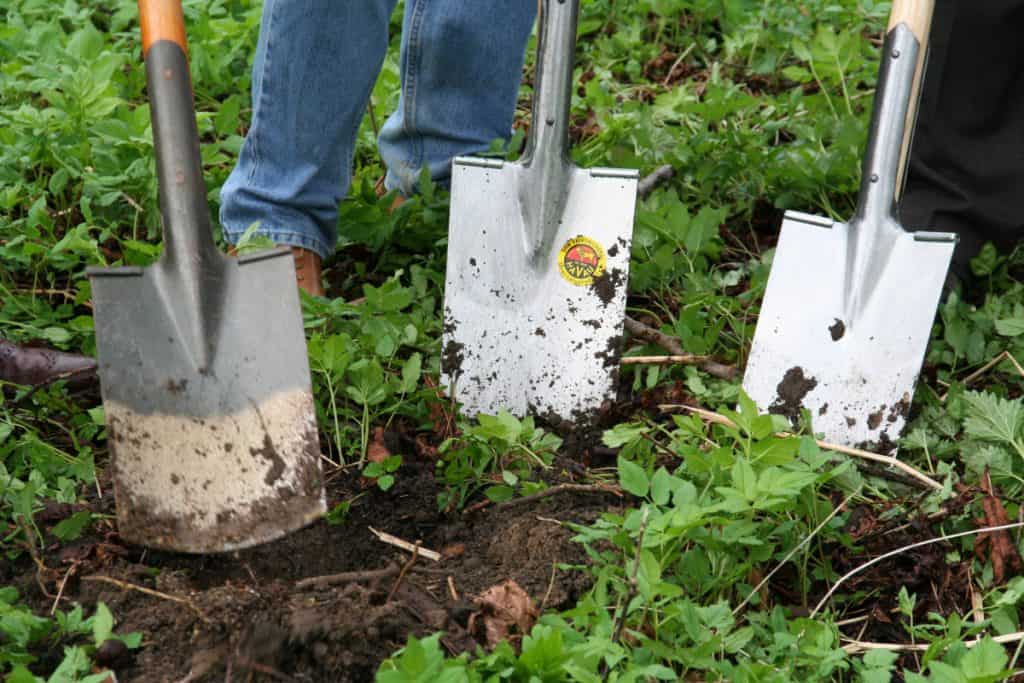
5. Garden spade
Some gardeners may think that having a digging shovel is already enough for drilling. Little did they know that a digging spade can also be extremely helpful in the garden bed!
Its square-shaped blade design makes the tool ideal to use in tight spaces. The flat head design is also ideal for digging holes or removing plants from the ground.
Note: A garden spade is better suited for loose soil that is not compacted or rocky.
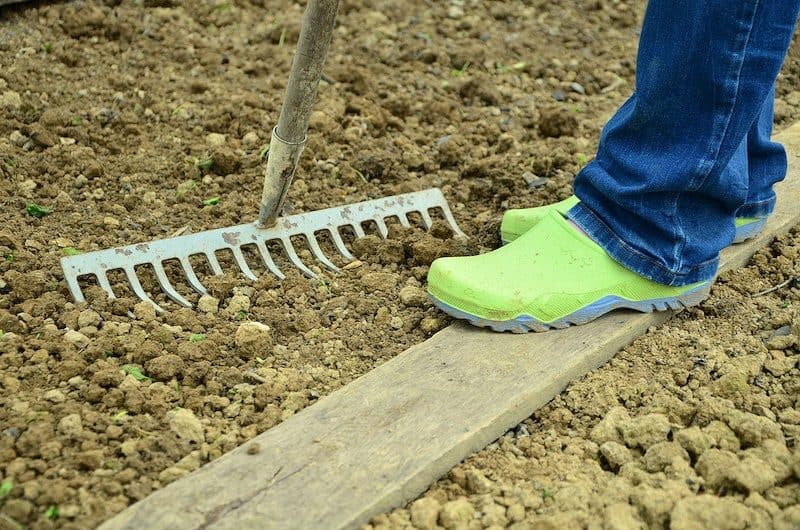
6. Bow Rake
A garden rake, in general, is an indispensable tool for people who have backyards. It’s one of the most commonly used garden equipment as it can serve various purposes.
Larger rakes, for one, are incredibly helpful for removing leaves and grass clipping. You can also use this tool to clear the weeds, spread mulch, or remove stones from the garden.
But keep in mind that not all rakes are created equal. As for a bow rake, its shape is different from an average leaf rake. The tines are shorter, only a few inches long, and they are parallel to each other.
This tool can pick up any debris and pull away thickly matted, compacted dead turf. It’s also good for pushing around, grooming, and levelling soil, mulch, gravel, and compost heap.
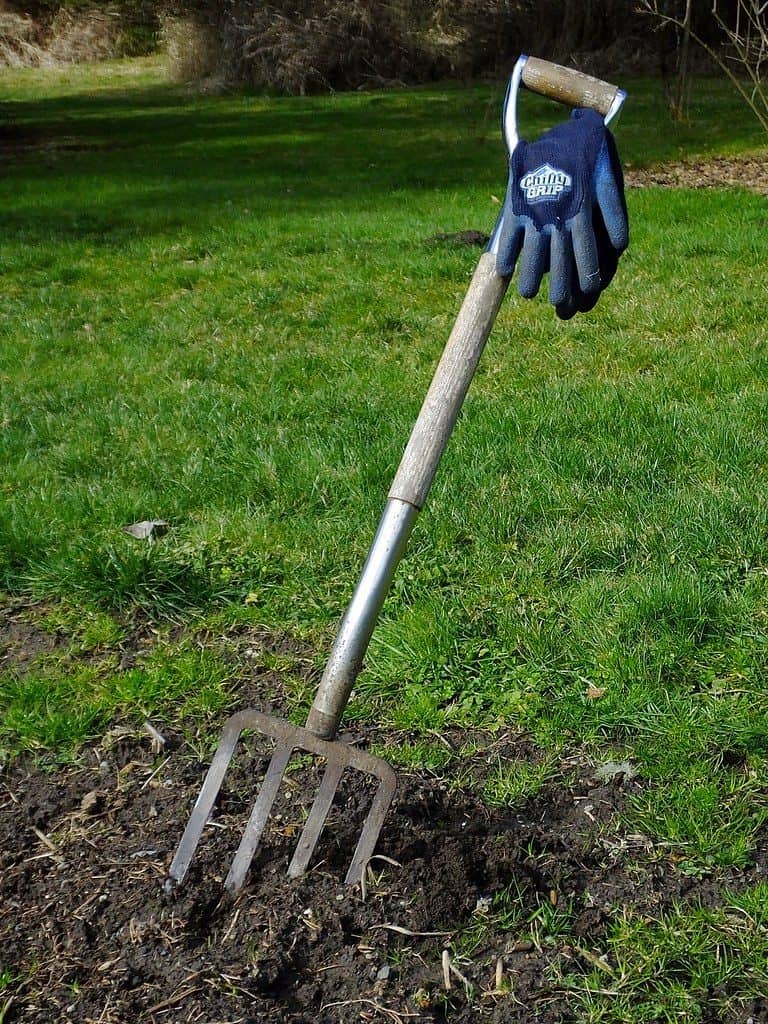
7. Digging fork
Shallow-rooted weeds removal, loosening soil, and lifting roots are a few of the common gardening tasks. And to perform these chores right, you’ll need a digging fork.
It features four flat and thick tines, best for breaking down firmly packed dirt. If you’re planning to dig into rocky or extremely compacted soil, this tool comes in handy.
A digging fork causes less damage to the root structure. This allows you to get out more of the roots than you can with a spade.
For delicate plants, it helps reduce the stress of transplanting. As for the pesky weeds, it ensures you get out all the roots, so they don’t return later.
Even better, a garden fork helps lessen the strain on your body and reduce the back-breaking work!
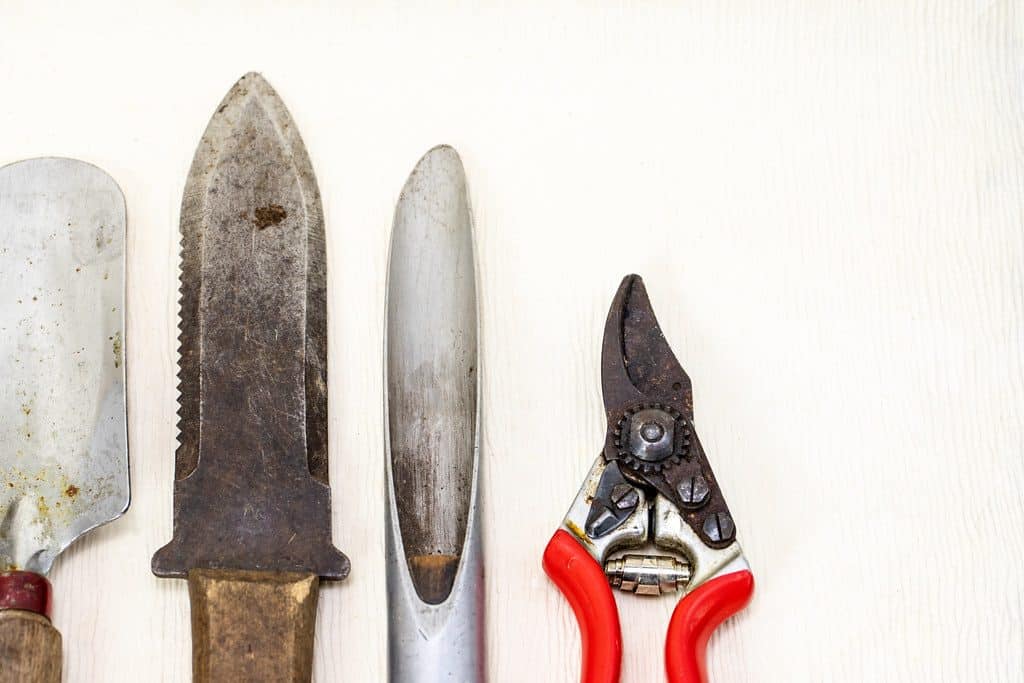
8. Garden knife
Great for cutting and trimming, a garden knife makes a convenient tool for beginners. It’s also an invaluable tool for weeding, transplanting, cutting sod and dividing plants.
The blade’s tip is great for drawing lines into the soil for planting gauges. Some come with a ruler etched into the steel, ideal for measuring depths when planting bulbs.
A Hori Hori garden knife, for example, is a favourite tool among gardeners. Not only does it act as a knife but also a piece of digging equipment saw. Its versatility also makes the tool ideal for weeding.
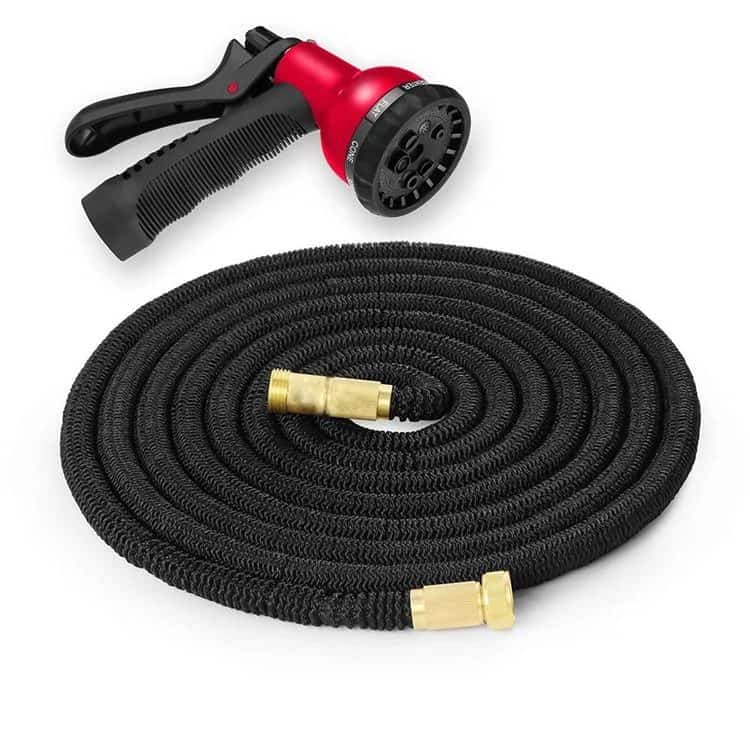
9. Garden hose
Watering your plants and the entire garden is a must. For some urban gardeners, watering cans do the trick. But if you have a yard, it will be best to opt for a standard hose nozzle.
Garden hoses are flexible tubes used for moving a liquid from one place to another. They are usually operated with clamps, flanges, and nozzles to control fluid flow.
And the nozzle features allows you to control the water pressure. A hose is excellent for watering your lawn or getting gas from the pump into your car’s tank. Just like this flexible expanding garden hose pipe!
The hosepipe is super easy to store to boot. It features solid brass fittings and an 8-pattern spray nozzle ideal for your watering needs.
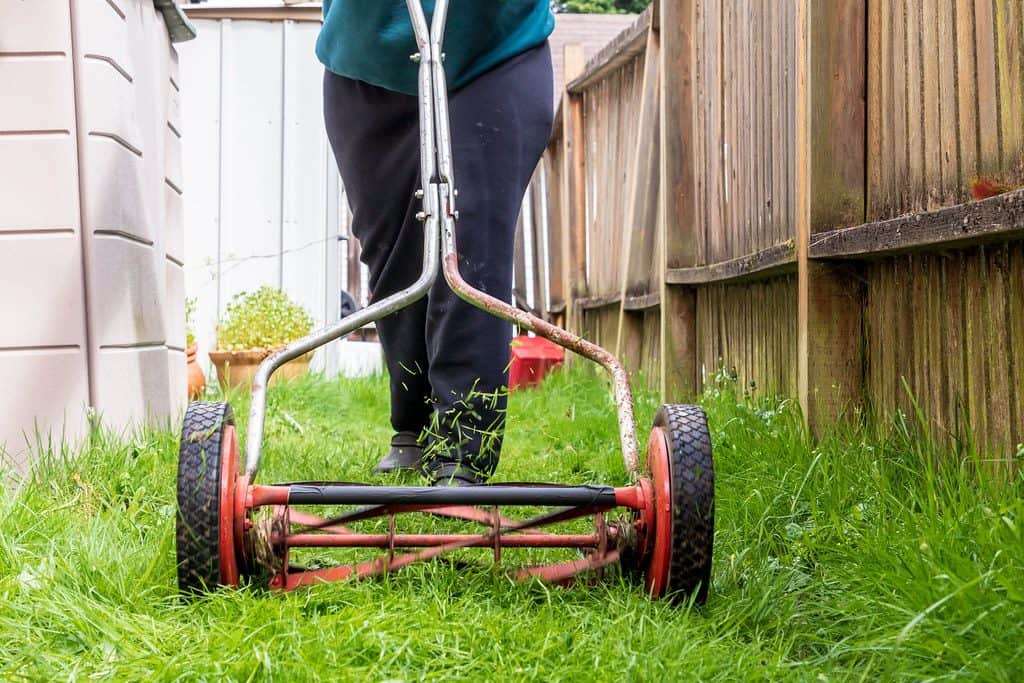
10. Lawn mowers
The more you get your lawn cut, the more healthy grass shoots your garden will have. This results in a more lush and healthy lawn over time. And this is where lawn mowers come into the picture.
Lawnmowers are machines that work by using revolving blades to cut grass on lawns. These machinery tools have main components: engine, mower pan, handlebar, and blades.
Using one can help eliminate pests lurking in the grass. It also ensures that various pieces of debris are picked up and are cleared every week. This guarantees that nothing accumulates on the grass.
Keeping up with regular mowing is important if you want to have an attractive, healthy lawn!
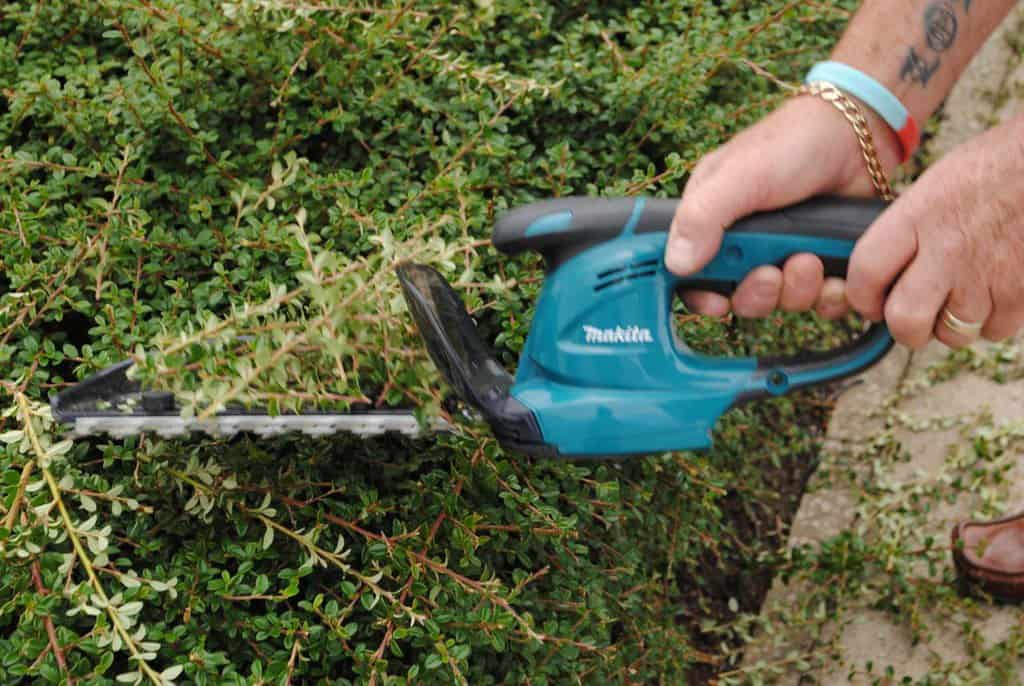
11. Powered hedge cutter
Thanks to these modern cutters, hedge trimming is no longer the tiresome job it used to be. Its versatility makes it ideal for:
- Cut, trim, prune plants
- Hedge clippings
- Shearing hedges into shapes
- Clearing overgrown grass, weeds, shrubs and bushes.
Hedge trimmers, in general, maybe lightweight but don’t let that fool you as they’re very powerful. Various types are available on the market, but these two are the most common ones.
A cordless powered hedge cutter comes with the freedom to cut hedges worry-free. There’s also no risk of coming unplugged.
Next is the petrol-powered hedge cutter. It’s the perfect choice for cutting large hedges with thicker branches and allows you to work for longer.
12. Garden hoes
Shaping the soil, removing weeds, and clearing soil are other common gardening tasks. A versatile hand tool such as a hoe is up for the job!
A hoe is a gardening hand tool used to cultivate the soil, remove weeds, and harvest root crops. All so you no longer have to complete the same tasks by hand anymore!
13. Grass trimmers and strimmers
Lawn mowers and trimmers are similar in their job description. Both help to keep lawns and turf looking great.
But what makes a grass trimmer unique is it can trim lawn edges where a mower can’t reach. One with a curved shaft is often used for easy trimming around lawns and flowerbeds.
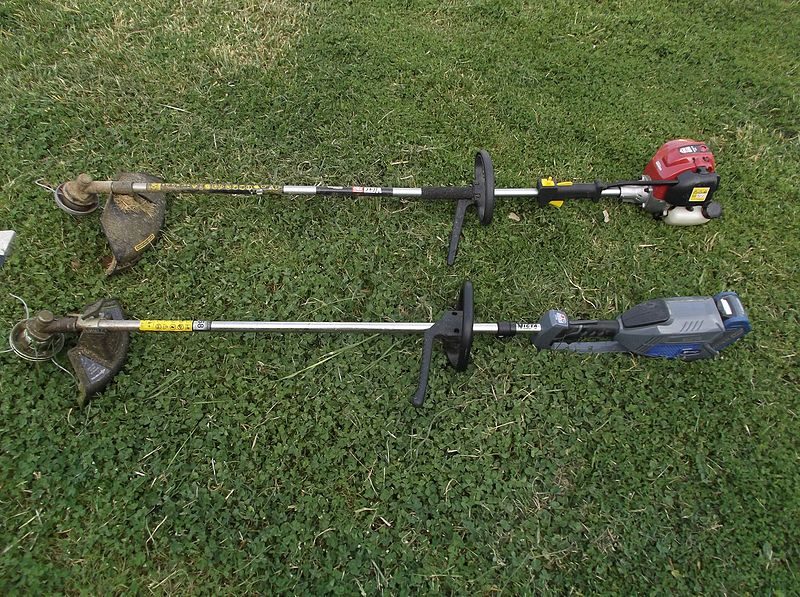
14. Brush cutters
Also known as a brush saw, a brush cutter is a more powerful tool than a trimmer. It’s a powered tool used for trimming weeds, small trees, and foliage not accessible by a mower.
Brush cutters can also face even a compact area of thick vegetation and rough grass. Its cutting mechanism is a metal blade.
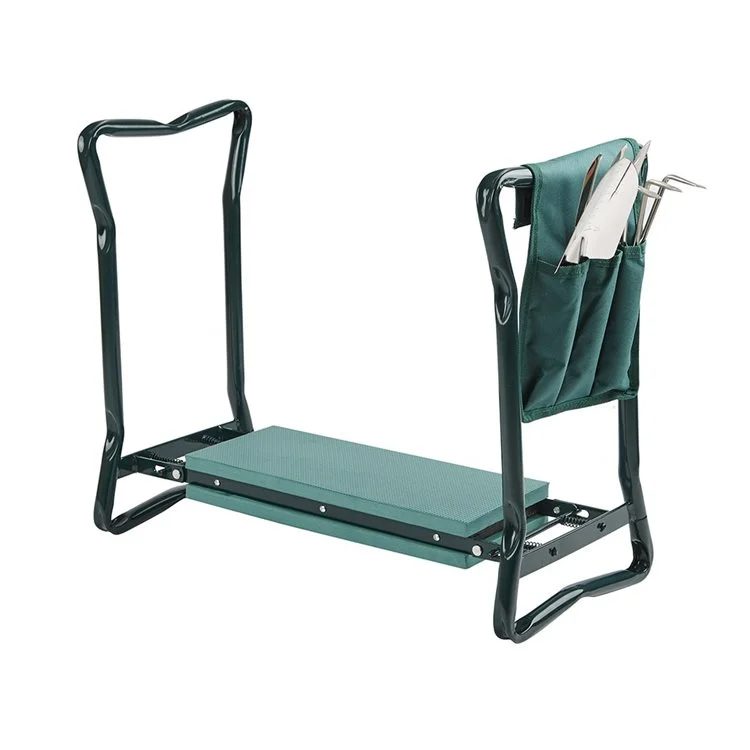
15. Kneeler
Kneeling when gardening is made easy with a garden kneeler. It’s a deep-seat garden kneeler and stool in one that provides a cushioned site for your knees.
It also helps lower your body to the ground without hurting your knees or back. This is great for weeding, seeding or planting.
The best garden kneelers offer supportive padding and relief. This also means you can enjoy gardening for longer.
Just like this folding garden kneeler with an inside pouch for tools! It provides the cushioning you need and ensures you can trim, cut and maintain your garden longer.
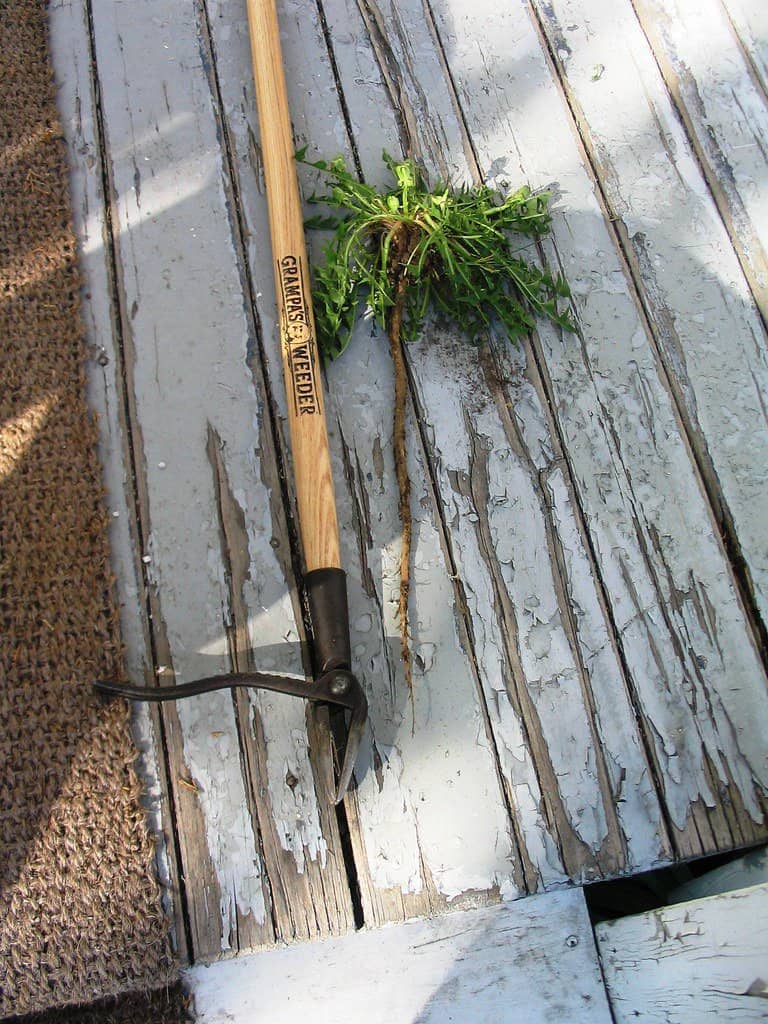
16. Weeder
A weeder is a must-have for gardeners battling pesky weeds. Its slender design and sharp, hooked blade allow precise root extraction. Weeding regularly also prevents unwanted plants from competing with other flowers and vegetables.
With this item, your garden remains weed-free. Not only does it promote the health of your plants, but also the aesthetics of your outdoor space.
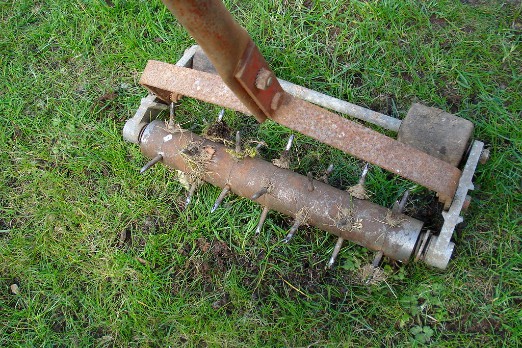
17. Lawn aerator
A lawn aerator is vital for maintaining a lush and vibrant lawn. It perforates the soil, enabling better air and water circulation. This, in turn, promotes deeper root growth and ensures a greener, more resilient lawn.
18. Edging shears
Edging shears define the boundaries of your garden beds and pathways with precision. They create a clean, manicured look, enhancing the overall appearance of your garden. With these shears, your garden’s edges will look professionally maintained.
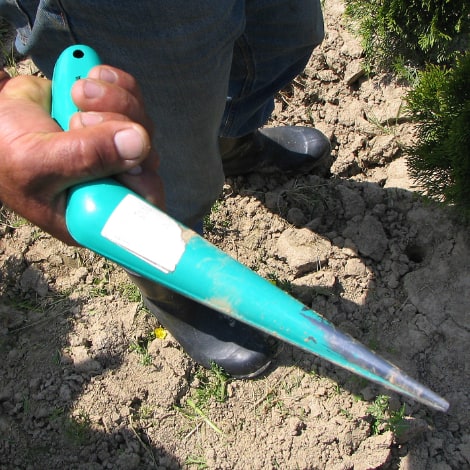
19. Dibber
A dibber is a simple yet essential tool for planting seeds or small bulbs with precision. It ensures stable planting depth – crucial for uniform growth and a bountiful harvest. Its ease of use makes it a must-have for every gardener.
20. Garden scissors
Garden scissors are versatile and handy for various tasks. These include deadheading flowers, cutting twine, harvesting herbs, and more. Their sharp blades make precise, clean cuts, minimising damage to your plants.

21. Secateurs
Secateurs are indispensable for pruning and shaping woody plants, bushes, and small branches. Their ergonomic design and sharp blades allow for accurate cuts. Such features help promote plant health and growth, to add.
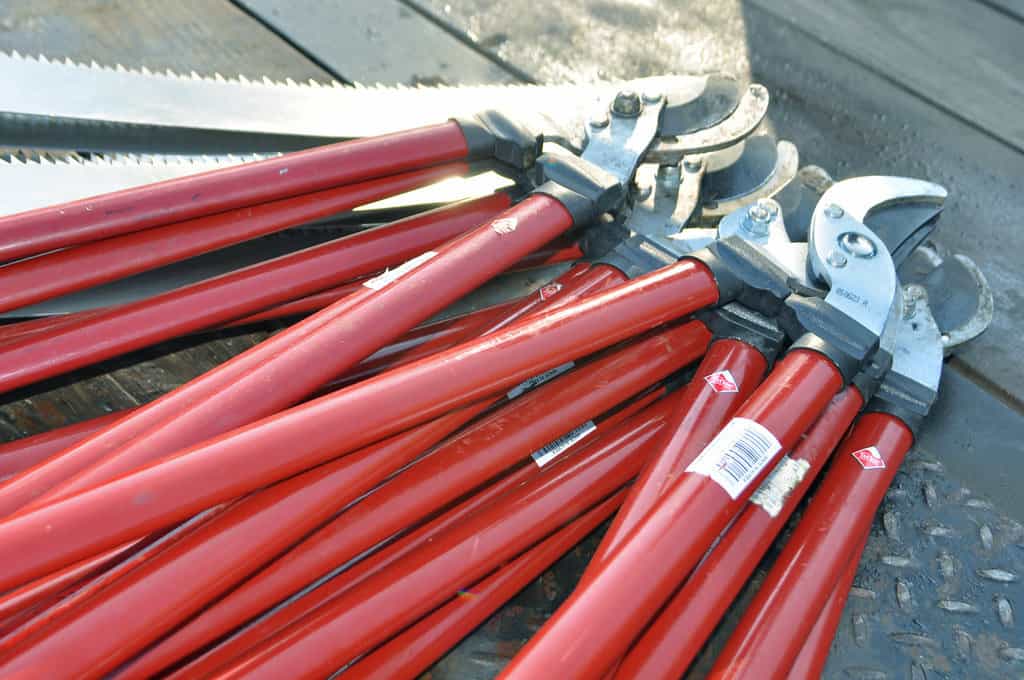
22. Loppers
For larger branches and overgrown shrubs, long-handled loppers are essential. These pruning shears provide the leverage needed to make clean, effortless cuts on thicker branches. They help keep your garden tidy and your plants in peak condition.
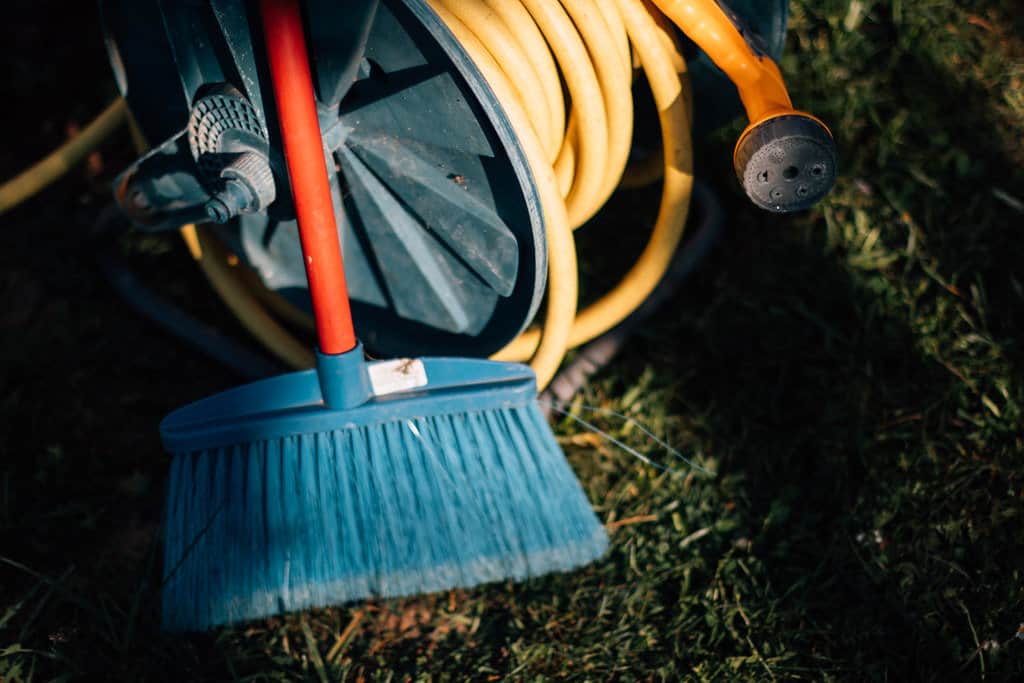
23. Broom
A garden broom keeps your paths and outdoor spaces clean and safe. It’s often overlooked but is invaluable for maintaining your garden’s cleanliness. Sweep away those leaves, dirt, and debris!
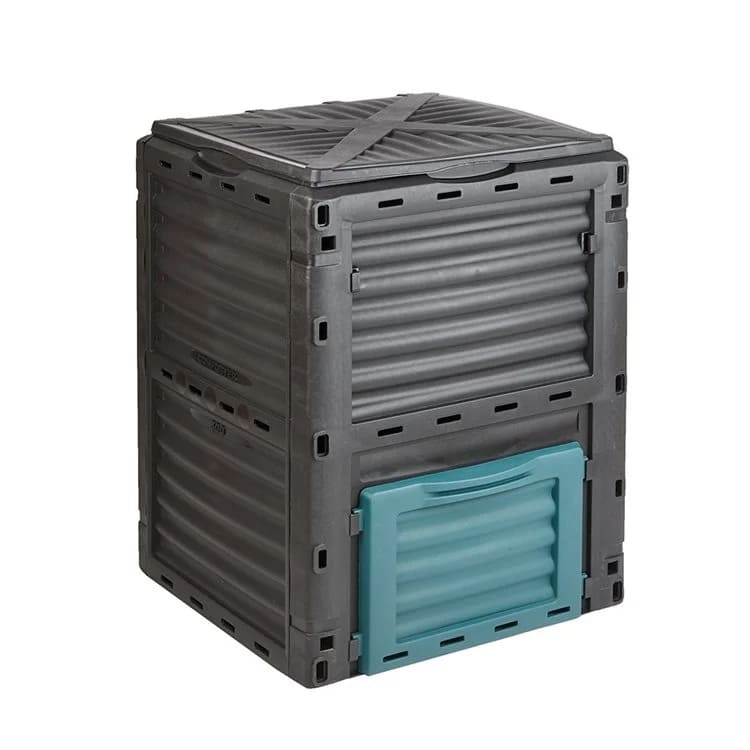
24. Compost bin
A compost bin is the eco-friendly gardener’s best friend. It allows you to recycle kitchen and garden waste into nutrient-rich compost. With this, you can enhance your soil’s fertility and reduce waste. A sustainable way to nurture your plants and reduce your environmental footprint!
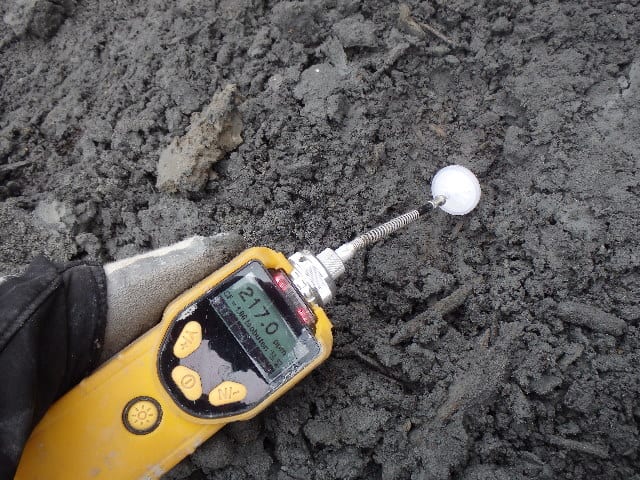
25. Soil pH tester
To ensure your plants thrive, it’s crucial to monitor soil pH. A soil pH tester helps you determine if your soil is acidic, alkaline, or neutral. This allows you to make informed decisions about which plants to grow and which soil amendments are needed.
Round-up
You can transform your garden into something with the right gloves and an arsenal of tools. Prepare the essentials outlined in this blog at your disposal, and you can finish the “dirty work” in no time!
Post-use, ensure a thorough cleaning and proper drying before stowing them away in your garden shed. If you’ve installed shelves or hooks in your potting shed, you’re all set. The same applies if you have a greenhouse. It becomes a convenient central storage hub for all your gardening essentials.
Next on your reading list: The Must-Have Tools in Your Shed for Repair and Maintenance
Round-up
You can transform your garden into something with the right gloves and an arsenal of tools. Prepare the essentials outlined in this blog at your disposal, and you can finish the “dirty work” in no time!
Post-use, ensure a thorough cleaning and proper drying before stowing them away in your garden shed. If you’ve installed shelves or hooks in your potting shed, you’re all set. The same applies if you have a greenhouse. It becomes a convenient central storage hub for all your gardening essentials.
Next on your reading list: The Must-Have Tools in Your Shed for Repair and Maintenance
Shop Garden ToolsFAQs
Which gardening tools do I need?
This depends on how you use your garden. But in general, the gardening tools we've included in our list are the must-have ones.
This includes hand tools like trowels, spades, shovels, and gloves. Power tools and accessories like lawn mowers and garden hoses.
What kind of garden tools are most important to use in farming?
A garden shovel can be useful, particularly for growing small and delicate plants. This tool can also help uproot stubborn weeds, clear plant dirt and debris without damage.
It especially makes a must-have tool for beginners!
What is rake for?
Garden rakes are long-handled tools used for scooping, scraping, gathering or levelling. Some have flat heads, while others have sharp metal tines that can break up compacted soil or rocks.
How to sharpen and take care of your tools?
Pruners, loppers and shears are all sharpened in the same way. After use, wash the tool in soapy water and let it dry.
Hold it firmly in position, then pass the sharpener over the edge of the blade. Use a file, whetstone or sharpening stone that suits the size of the blade.
Why is my lawn mower cranking but not starting?
Chances are the reason behind it is bad gas. Gas that sits for many months during the off-season will eventually break down.
This gums up the fuel line and carburettor in the engine, preventing the lawn mower from starting. Fill up the tank and use an oil syphon pump to drain it.

